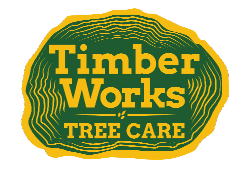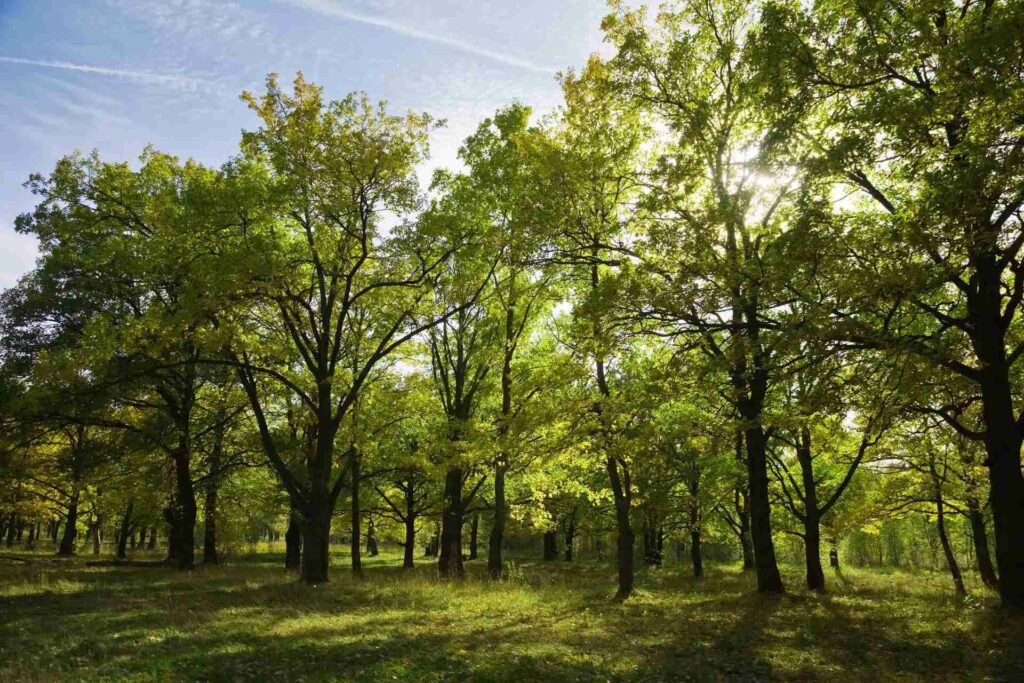In the spring and summer, as flowers bloom and trees fill with leaves, it’s easy to spot when a plant is unhealthy or dead. Oak trees, while loved for their substantial size and strength, are not immune to decay, even in summer.
A variety of factors can cause death in trees, including disease, drought, and other extreme weather conditions. Oak trees in urban environments also face the problem of soil compaction, which is when soil particles are packed densely together, limiting pore space and leading to lower oxygen levels and poor drainage throughout the roots.
Additionally, when these oak trees experience seasons of heavy rain, oxygen levels are further affected by soggy ground. These stressors can cut off oxygen supply to the finer roots, threatening the overall health of the oak tree.
If you suspect your oak tree is dead, it’s important to call a professional to handle its removal.
At Timber Works Tree Care, our certified arborists can diagnose disease and decay in your tree and help you determine if it poses a threat to your property. We provide reliable and affordable oak tree removal to support the health and safety of properties throughout Northern Virginia.
See below for signs that indicate your oak tree is dying:
Lack of New Growth
Inspect your oak tree for evidence of growth. Are there any new branches, buds, or leaves? If there are dead leaves present and no signs of new growth, it’s likely that your tree is dead or dying.
Top Branches are Dead
Examine the branches of your oak tree; if only the lower branches have new growth while the top ones appear dead or have broken off, this indicates a dying tree.
Yellow or Brown Under Bark
Try scraping the bark in multiple areas on the tree. A healthy oak tree will have green coloration. If it reveals a yellow or brownish color underneath, the tree is mostly likely dying or dead.
Fungus Growth
Fungus growth is a sign that disease has taken over your tree, and it’s generally incurable. Fungus on the trunk is a sign of decaying or dead wood. Root rot causes sogginess near the soil line and creates fungal growth, which looks like mushrooms, at the base of the tree.
Insect or Animal Habitation
Another sign of decay is insect and animal habitation. Numerous types of insects and animals, including ants, beetles, and woodpeckers will overtake a tree once it begins to die.
If you identify any of these signs listed above, it may be necessary to have your oak tree removed. Dead oak trees can cause injury or damage to your property if left standing and exposed to the elements. Consider hiring a professional to perform an oak tree removal to ensure the dead tree is dealt with properly.
Timber Works Tree Care: Experienced Oak Tree Removal in Manassas, VA
At Timber Works Tree Care, our team has years of experience performing oak tree removals in Manassas, VA and throughout Northern Virginia. We are dedicated to ensuring each job is done as safely and efficiently as possible. In addition to tree removal, Timber Works provides a variety of services to maintain the health and safety of your property, including pruning, land clearing, and stump grinding.
Contact us at (540) 254-5773 to learn more about how we can help with your tree care needs and to receive a free estimate.







